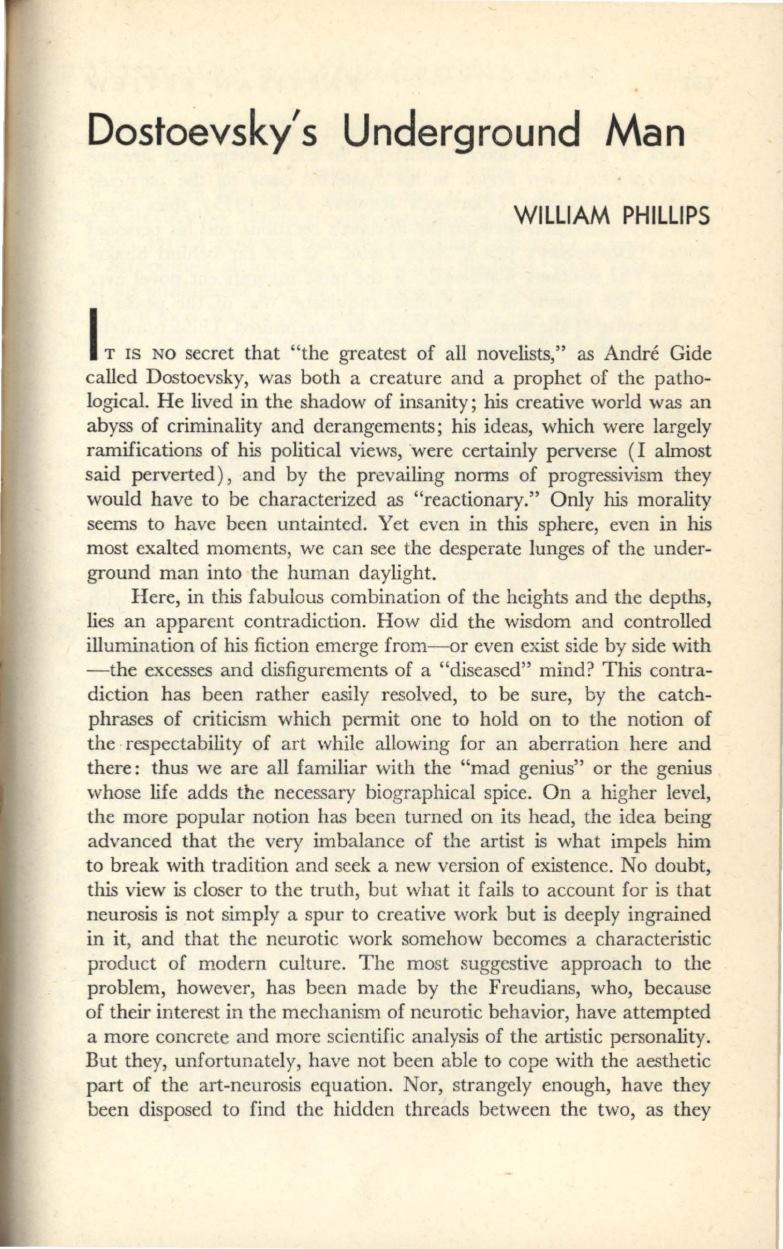
Dostoevsky's Underground Man
WILLIAM PHILLIPS
I
T
rs
NO
secret that "the greatest of all novelists," as Andre Gide
called Dostoevsky, was both a creature and a prophet of the patho–
logical. He lived in the shadow of insanity; his creative world was an
abyss of criminality and derangements; his ideas, which were largely
ramifications of his political views, ·were certainly perverse (I almost
said perverted ) , and by the prevailing norms of progressivism they
would have to be characterized as "reactionary." Only
his
morality
seems to have been untainted. Yet even in this sphere, even in his
most exalted moments, we can see the desperate lunges of the under–
ground man into the human daylight.
Here, in this fabulous combination of the heights and the depths,
lies an apparent contradiction. How did the wisdom and controlled
illumination of his fiction emerge from- or even exist side by side with
-the excesses and disfigurements of a "diseased" mind? This contra–
diction has been rather easily resolved, to be sure, by the catch–
phrases of criticism which permit one to hold on to the notion of
the ·respectability of art while allowing for an aberration here and
there : thus we are all familiar with the "mad genius" or the genius
whose life adds the necessary biographical spice. On a higher level,
the more popular notion has been turned on its head, the idea being
advanced that the very imbalance of the artist is what impels him
to break with tradition and seek a new version of existence. No doubt,
this view is closer to the truth, but what it fails to account for is that
neurosis is not simply a spur to creative work but is deeply ingrained
in it, and that the neurotic work somehow becomes a characteristic
product of modern culture. The most suggestive approach to the
problem, however, has been made by the Freudians, who, because
of their interest in the mechanism of neurotic behavior, have attempted
a more concrete and more scientific analysis of the artistic personality.
But they, unfortunately, have not been able to cope with the aesthetic
part of the art-neurosis equation. Nor, strangely enough, have they
been disposed to find the hidden threads between the two, as they


